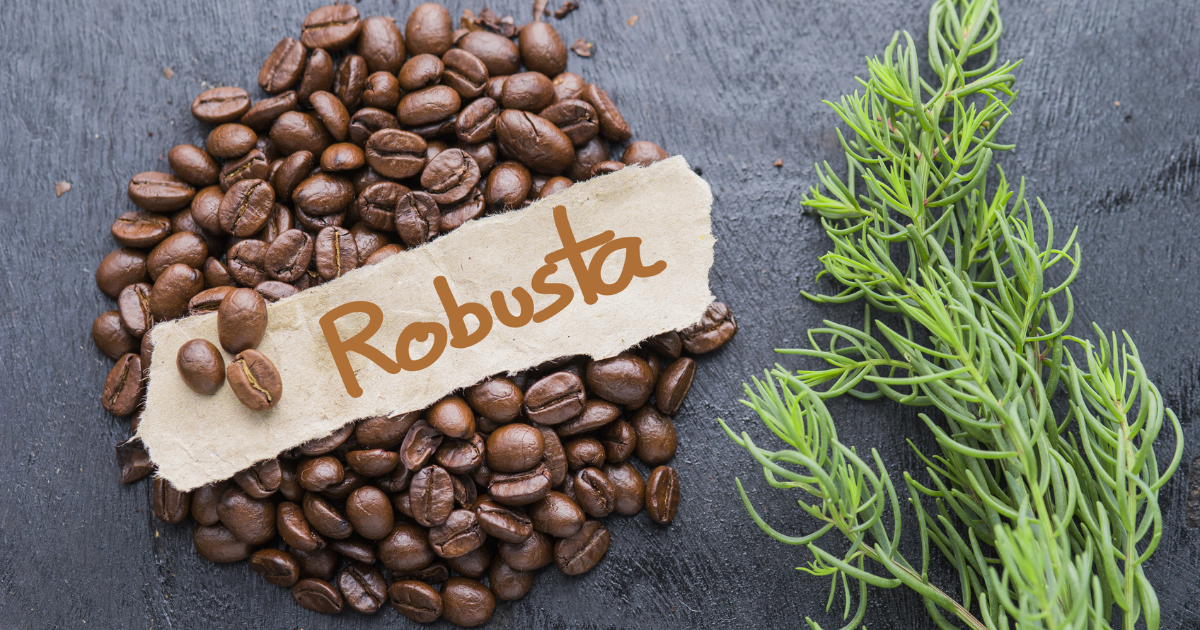“All About” Vietnamese Robusta Coffee – What Is Robusta Coffee?
Coffee is not just a familiar daily drink for people around the world, especially in Vietnam. It’s also a part of lifestyle and culture, connecting people through its rich aroma and flavor.
Although coffee is deeply ingrained in Vietnamese life, many still don’t fully understand Vietnamese Robusta Coffee, one of the country’s signature varieties, or how it’s processed into a finished cup. In this article, we’ll break down everything you need to know: What is Robusta coffee? How is it grown and processed? Why is it so important to Vietnam?

1. What Is Robusta Coffee?
Robusta coffee (known in Vietnam as “Cà phê Vối”) belongs to the Coffea canephora species, cultivated globally for centuries. Another variety within Coffea canephora is Conilon, widely grown in Brazil. These are not separate species but two types of the same coffee group.
Compared to Arabica, Robusta grows faster, tolerates harsher conditions, and is easier to cultivate. However, Robusta often receives less care during production because it’s considered cheaper to grow, yields larger harvests, and naturally contains higher caffeine levels. As a result, its flavor is frequently perceived as less refined than Arabica.
2. Where Does Coffee Come From?
2.1. The Origins of Coffee
According to historical records, coffee traces back to 1671 in Kaffa (Ethiopia, Africa today). A goat herder named Kaldi noticed his goats behaving energetically after eating leaves and berries from wild bushes. Curious, he brought these berries to a local monastery, where monks boiled and roasted them, drinking the resulting brew.
The drink kept them alert and energized, soon becoming a staple for religious ceremonies and desert journeys. This legend from the 9th century supports Ethiopia as coffee’s birthplace, with the word “coffee” believed to derive from “Kaffa.”
2.2. How Robusta Coffee Came to Vietnam
Alongside Arabica, Vietnamese Robusta Coffee is one of the world’s most widely cultivated types. Discovered in the 1870s in Congo, Robusta spread rapidly.
In 1908, the French introduced Robusta and Excelsa varieties to Vietnam. Initially grown in the cooler northern provinces, Robusta struggled due to unsuitable temperatures. By 1982, it was relocated and cultivated extensively in the Central Highlands and Southeastern Vietnam, where its preference for hot, humid climates and resistance to pests—especially coffee leaf rust—helped it thrive.
2.3. Robusta Coffee Regions in Vietnam
Today, Vietnamese Robusta Coffee is mainly grown in the Central Highlands, across provinces such as Kon Tum, Đắk Lắk, Đắk Nông, Lâm Đồng, and Gia Lai. Famous Robusta-growing areas include:
-
Buôn Ma Thuột and Buôn Hồ (Đắk Lắk)
-
Cư Kuin (Đắk Lắk)
-
Đắk Mil (Đắk Nông)
-
Pleiku and Ayun Pa (Gia Lai)
These regions boast fertile basalt soil, enriched by monsoon rains, which is ideal for coffee cultivation. Robusta is also produced in Long Khánh (Đồng Nai) and coastal districts of Bà Rịa – Vũng Tàu, yielding beans with bold, distinctive flavors.
Thanks to its high productivity and resilience, Vietnam has become the world’s second-largest coffee producer and the leading exporter of Robusta coffee. This growth has significantly boosted the Vietnamese economy and empowered local farmers.
However, despite its volume and hardiness, Robusta still lags behind Arabica in perceived quality. Most Robusta exports remain unprocessed, shipped as raw beans rather than specialty-grade coffee.
Why Vietnamese Robusta Coffee Matters
Robusta may not have the same delicate acidity or aroma as Arabica, but it offers bold body, strong caffeine content, and a distinctive bitterness—qualities that make it ideal for traditional Vietnamese drip coffee (cà phê phin) and instant coffee production.
By understanding its history, regions, and unique traits, you can better appreciate the role of Vietnamese Robusta Coffee in both global coffee culture and your daily cup.
